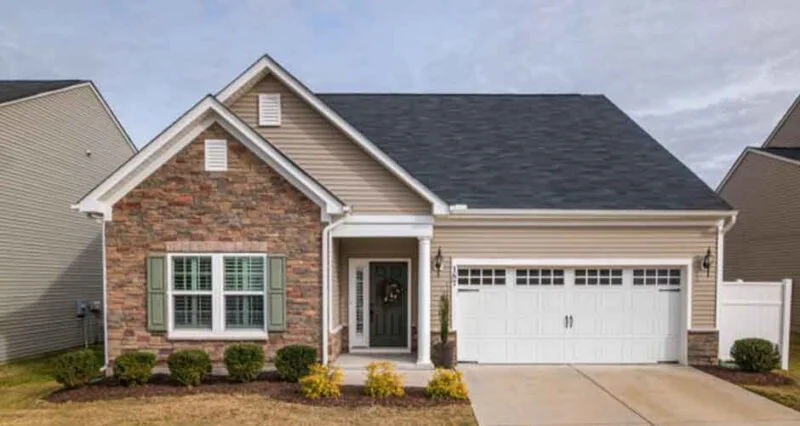
Homeowners understand the importance of maintaining their property’s exterior, especially in places with challenging climates. As residents of Steel City can attest, Pittsburgh is not exempt from such challenges.
With its frosty winters and humid, often rainy summers, Pittsburgh’s weather can be demanding on homes. Over time, this can result in wear and tear that might not be visible immediately. Therefore, maintaining a resilient exterior is of utmost importance.
Ensuring your siding is in excellent condition is one way to accomplish this. With that said, how can one determine when their home’s siding needs replacement? Here are some clear indicators you need to replace your home’s siding.
Hikes in Energy Bills
High energy bills can be a concern for many households. While several factors contribute to rising electricity costs, homeowners might not immediately realize the role of their home’s siding. Proper siding provides good insulation, ensuring homes remain warm in the winter and cool in the summer without putting too much of a burden on the heating or cooling systems.
According to a recent report, residents of Pittsburgh, PA, on average, spend about $278 per month on electricity. Surprisingly, that’s 27% higher than the national average electric bill. Such figures underscore the importance of optimizing every aspect of home insulation, including siding.
Energy consumption surges if the HVAC system has to work harder due to poor insulation from deteriorating siding. Consequently, if you find your energy bills escalating without reason, it might be worth checking your home’s siding.
Investing in high-quality siding from a trusted Pittsburgh siding company can help homeowners access efficient materials and installation techniques, potentially leading to substantial savings on monthly electricity bills.
Warping or Bubbling in Siding
Moisture can cause your siding to warp or bubble, which are problems that you need to pay attention to. Warping means that your siding material has changed its shape or twisted. Bubbling means that there are bumps or blisters on your siding surface.
When siding remains wet for extended periods, the trapped moisture can cause it to lose its original shape. Over time, this leads to either warping or bubbling. These issues can become common, especially in regions with frequent rain or high humidity.
It’s important to address them promptly because they hint at underlying moisture problems that can further damage the siding or even penetrate the home’s interior. If you see any warping or bubbling on your siding, you should talk to an expert who can check how bad the damage is and tell you what to do.
Fading or Peeling Paint on Siding
When it comes to siding, fading or peeling paint isn’t just an aesthetic concern. Both are clear indicators that the siding might be nearing the end of its functional lifespan.
Siding materials, when in good condition, should retain their color and finish for a significant duration. Paint might begin to fade due to constant exposure to the sun’s UV rays, which degrade the color pigments over time.
On the other hand, peeling can occur when moisture gets trapped underneath the paint, causing it to lose its adhesion. This results in visible flaking or peeling.
Mold, Mildew, or Fungus on Siding
Dark or discolored patches on your siding often point to the growth of mold, mildew, or fungus, primarily brought on by long-standing moisture exposure. If your siding stays wet for too long, it offers a welcoming environment for these unwanted guests.
While these growths are aesthetically displeasing, their impact isn’t just superficial. They actively degrade the siding by feeding on its organic components. Over time, this weakens the siding and shortens its lifespan.
Moreover, for folks with allergies or respiratory issues, they’re a health concern. If you notice any such growth on or beneath your siding, it’s a red flag that there might be moisture problems.
Rotting or Soft Spots on Siding
Rotting or soft spots on the siding are concerning signs that demand immediate attention. Rot typically results from prolonged exposure to moisture, which breaks down the siding material, leading to a soft and crumbling texture.
Over time, this decay can compromise the structural integrity of the siding, making it less effective in protecting your home from external elements. When you touch or press on your siding, and it feels soft, it indicates that the inner layers might be rotting.
Such areas are often vulnerable to pests and further water damage, leading to more extensive problems in the future. Regular inspections and early detection of these issues can save homeowners from costly repairs.
Increased Noise Penetration Through Siding
A peaceful home environment can be disrupted when exterior noises start to intrude more than usual. One of the lesser-known roles of siding is its contribution to sound insulation. A properly installed and maintained siding can act as a barrier against external noises.
If you notice that outside sounds—traffic, construction, or even chirping birds—are becoming more pronounced within your home, it might indicate siding issues. Gaps, wear and tear, or deterioration in the siding can allow more noise to penetrate.
Such increased noise penetration isn’t just about comfort; it suggests that the siding might also have other vulnerabilities, like potential pests or moisture breaches.
Loose or Missing Panels on Siding
Loose or missing panels on your siding are more than just a visual inconvenience; they can directly threaten your home’s protection. Siding protects the house from external factors like wind, rain, and debris. When panels become loose or go missing, they leave parts of your home exposed to these elements.
Such exposure can lead to internal damage, moisture issues, and reduced energy efficiency. Moreover, once one panel is compromised, it’s easier for adjacent panels to get affected, causing a cascading effect of damage.
Regularly inspecting your home’s exterior can help in the early detection of any such issues. If you notice loose or missing panels, addressing the problem promptly is important.
Severe Hail or Storm Damage on the Siding
Storms and hail can wreak havoc on a home’s exterior, especially the siding. When subjected to intense weather conditions, siding can show signs of distress like dents, cracks, or even punctures. These damages can compromise the siding’s primary function: to protect the home.
If the integrity of your siding is threatened by storm or hail damage, it can lead to other issues. Water might seep through the cracks, leading to internal moisture problems.
Similarly, the home’s insulation efficiency can be reduced, potentially increasing energy costs. After a severe storm or hail event, inspecting your siding for any visible damage is a good practice.
Conclusion
Your home’s siding is a crucial protective barrier. Many signs can highlight the need for replacement, from alarming energy bills to the visible damage from storms. Loose panels or increasing noise penetration hint at compromised protection.
Mold or rot showcase potential health risks. Regular checks can spot these issues early. Addressing them quickly ensures your home stays protected and efficient. Staying vigilant about your siding’s condition will save costs and maintain your home’s overall health and safety.

